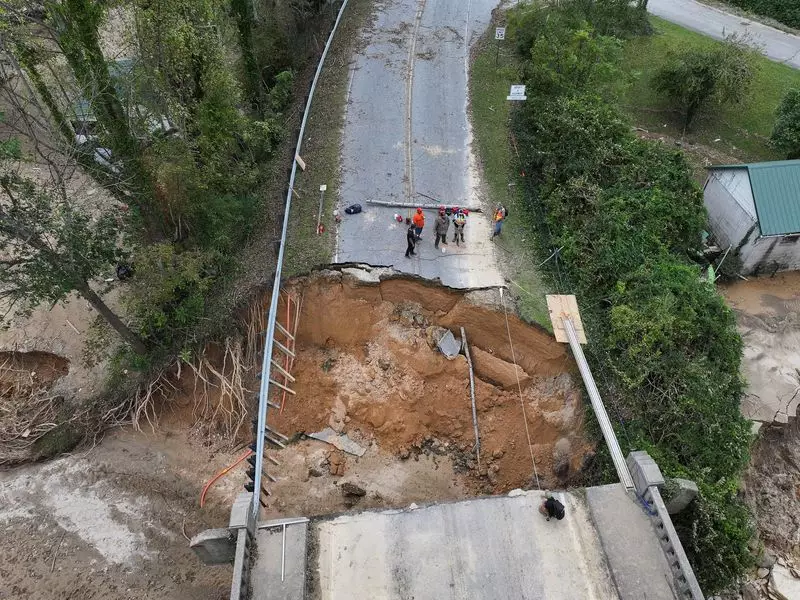The devastation caused by Tropical Storm Helene has plunged several southeastern states into a state of emergency. As of early this week, the toll in terms of human lives and property has been staggering, and the full extent of the disaster is still unfolding. Initial reports indicate that more than 100 people across North Carolina, South Carolina, Georgia, Florida, Tennessee, and Virginia have lost their lives because of the storm. Rescue operations are just beginning, and as recovery efforts ramp up, authorities fear that the death count may rise as they reach isolated towns and communities.
In the immediate aftermath of Helene, emergency crews have been working around the clock to provide assistance to areas most severely affected. North Carolina’s remote towns, many of which were rendered inaccessible by uprooted trees, collapsed infrastructure, and flooded roadways, have become focal points of a comprehensive aid effort. Reports indicate that over 7,000 residents sought assistance from the Federal Emergency Management Agency (FEMA), highlighting not only the widespread impact of the storm but also the urgent need for humanitarian aid.
One of the hardest-hit locations is the tiny hamlet of Bat Cave, North Carolina. Just a hundred miles west of Charlotte, this once-idyllic town has been transformed into a scene more reminiscent of a disaster movie than a residential community. Witnesses describe an apocalyptic landscape: the Broad River swelled to unprecedented levels, submerging homes and washing away bridges. Local residents reported navigating treacherous conditions, crossing bridges that appeared on the verge of collapse on makeshift planks—a stark testament to the fear and uncertainty that now envelops the town.
Stories emerging from Bat Cave paint a poignant picture of loss. Aaron Smith, a survivor, recounted how he and his family managed to escape their home with only a single suitcase, the last tangible remnant of a life upended. He remarked on the state of their neighborhood, saying, “There’s no roads, there’s no evidence of roads, there’s no trees, it’s just water and stuff.” Such descriptions reflect not only the physical devastation but also the emotional turmoil faced by these families as they stand on the brink of uncertainty.
Community Response and Unprecedented Challenges
In the face of overwhelming adversity, local communities and emergency responders are coming together in remarkable ways. The National Guard has mobilized, flying in thousands of tons of food and water to ensure that stranded residents receive critical supplies. Nevertheless, the sheer scale of the disaster poses significant challenges. Approximately 300 roads across the region are closed, and an estimated 1.8 million homes and businesses are without power, making accessibility a critical issue.
Mayor Tariq Bokhari of Charlotte has been vocal about the scale of the destruction, posting footage that captures the harrowing aftermath. “It’s so overwhelming,” he stated, emphasizing the pain of contemplating the long road ahead toward recovery. This sentiment resonates deeply across the state, where communities grapple with the reality of rebuilding lives and livelihoods from the ground up.
The federal government, along with state and local authorities, has begun a massive recovery initiative. Search and rescue teams have been deployed, and the U.S. Army Corps of Engineers is strategizing the removal of debris, which is essential for reestablishing roads and infrastructure. With around 1,200 federal personnel on-site and thousands more throughout the region, a concerted effort is underway, though the enormity of the challenge cannot be overstated.
President Joe Biden recently underscored the dire implications of climate change in his remarks concerning the storm’s devastation. He has pledged to visit the affected areas, reinforcing the need for federal aid and assistance. Urgent responses from Congress are anticipated, especially as the number of displaced individuals continues to grow.
As communities go about reassessing their futures, the stories of loss and resilience that emerge will undoubtedly shape the long-term narrative of recovery. For residents grappling with uncertainty, the question looms large: What does a path to recovery look like from such a profound humanitarian crisis? As the waters recede and the debris settles, it is imperative that support systems evolve to address the fundamental needs of these communities, ensuring they not only recover but also thrive in the future.
Tropical Storm Helene has left a trail of devastation that will take years to fully address. But amid the chaos and despair, the spirit of community and the essential role of local, state, and federal assistance will hopefully pave the way for rebuilding lives and restoring hope.

